Gérald Genta Retro Classic: The Definitive Genta Masterpiece?
by Martin Green
To call something a definitive masterpiece in relation to the genius that was Gérald Genta is quite something. Especially when the watch in question is not the Audemars Piguet Royal Oak, the Patek Philippe Nautilus, or even my personal favorite, the Pasha de Cartier.
While each and every one of these designs is brilliant, none were created free of restraints for the artist: while Genta did design them, the choice of paint and canvas weren’t entirely his.
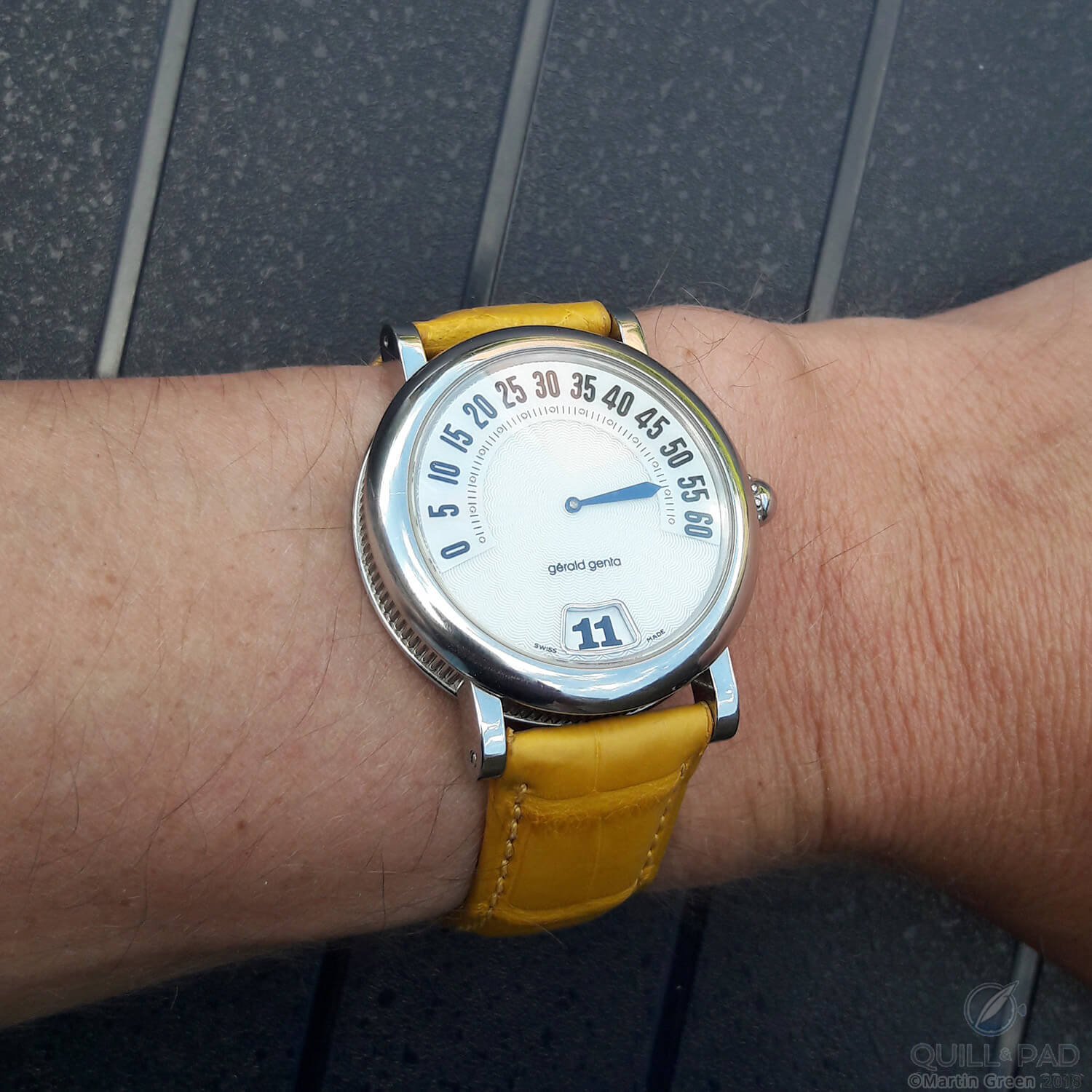
Gérald Genta Retro Classic on the wrist
All of these great watches (and more) bear the names of other brands, and while many consider those models by Genta among the most important creations in the history of watch design, they are not 100 percent Genta. For that he conceived his own eponymous brand.
Gérald Genta: visionary entrepreneur
While Genta gets credit for being one of the most influential designers to ever work in watches, he was much more.
Genta was also an entrepreneur and one who struck out on his own even before the tide was turning away from the quartz crisis, building a brand bearing his name where he experimented with designs, textures, materials, and complications.
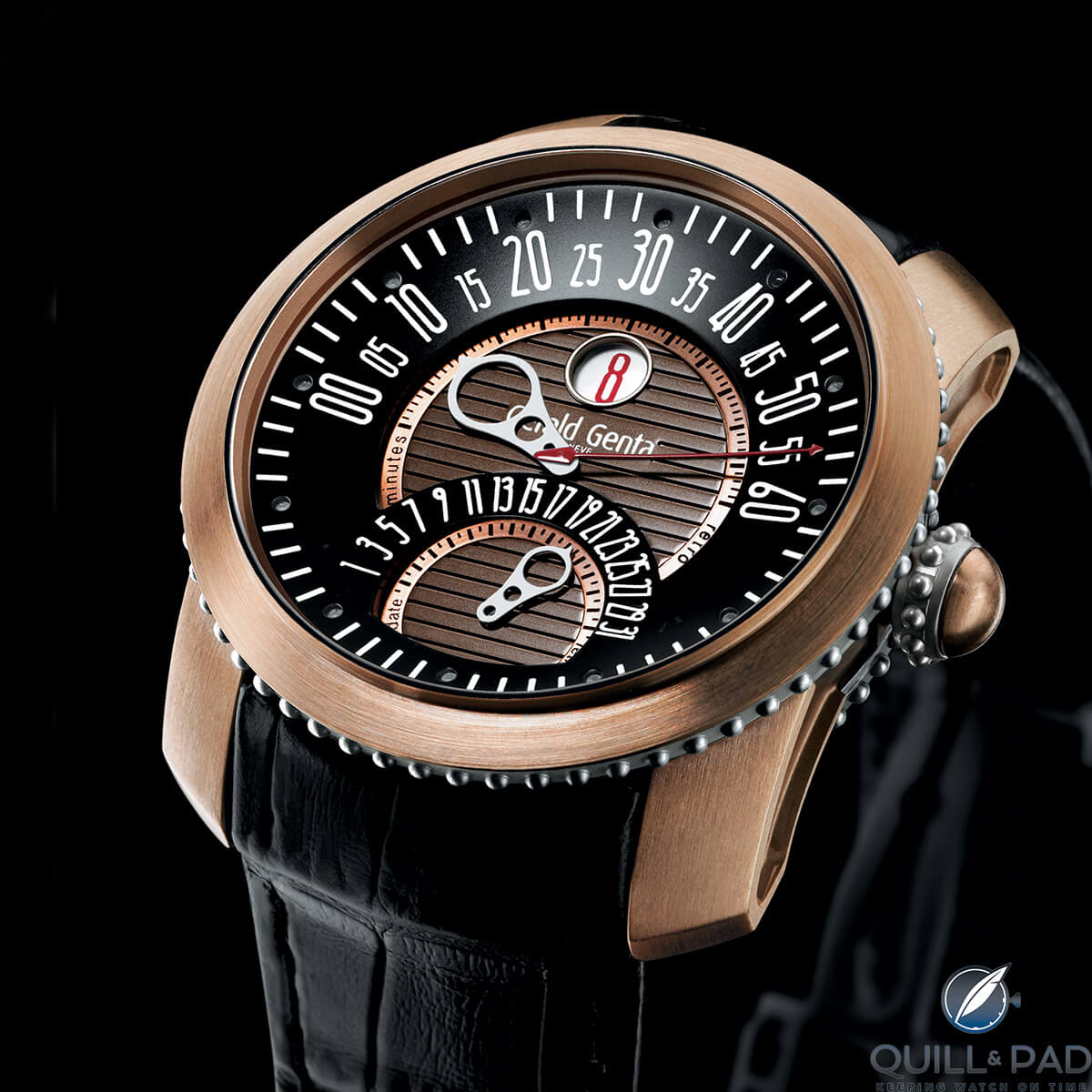
Gérald Genta Gefica Safari from 2007
With the Gefica model he was one of the first to embrace bronze as a material for wristwatch cases (see Give Me Five! Bronze Watches At Baselworld 2016).
This watch was matched with a strap in elephant leather because the road to brilliance lay with Genta through the unconventional. He was a man who could elevate the whimsical to a level that it gained the respect and admiration of even the most serious of watch connoisseurs.
The best testimony for this is that he was able to obtain a license from Disney to use Mickey Mouse and his friends to tell time (to examine this element in more detail I urge you to follow @super.corgi on Instagram, who showcases the wide variety of Disney Gentas).
While it was mainly time-only designs that gave Genta his claim to fame, he was among the first of the new watch brands (though independent watchmakers is perhaps a more apt description) to embrace mechanical complications.
In 1994 Genta celebrated the twenty-fifth anniversary of his watch industry career with what was at the time one of the most complicated watches in the world. Christened simply Grande Sonnerie, the name was likely down to Genta’s sense of humor, as “grande sonnerie” doesn’t even scratch the surface: yes, the watch indeed included a grande sonnerie but also a tourbillon, second time zone, and a perpetual calendar.
Gérald Genta’s definitive design is the Retro
Although by now you might think differently, rest assured I am not a groupie charmed by everything Genta made. In the years on his own, he also created a few watches that require an acquired taste to be appreciated – one that I apparently lack.
And while some might favor the Gefica or Grande Sonnerie as Genta’s definitive design under his own name, I would like to make a case for the Retro.
Genta made many designs for complicated watches, but I always think that he was at his best with uncomplicated watches. These provided him with a clean canvas to create something truly exceptional.
And while Genta wasn’t afraid to go into a Versace-like mode and design rich, busy, over-the-top watches, he could also show some restraint.
The Retro model became an important part of the collection later on in the history of Gérald Genta, the watch brand, and here we find a touch of irony in the specific Retro illustrated in this article to make my point.
This specific Retro was sold in 2000, at a time when Genta was no longer part of the brand that bears his name.
In 1998 he sold his brand to The Hour Glass, a Singapore-based watch retailer, who in turn sold it on to Bulgari in 2000.
At this time Bulgari was still an independent company, it later become part of the LVMH group.
Unfortunately, Genta was still alive when Bulgari decided to discontinue the Gérald Genta name and assimilate the surviving designs under its own brand name.
In August of 2011, Genta passed away at the age of 80.
Let’s take “retro” literally
Over the years that I have been writing about watches I have handled countless examples of them. And the more I examined, the more I came to realize that perfection is not an absolute term, but rather one that has multiple layers.
A watch can be perfect, yet only until you find another one that is more perfect. The question is: can we then still call the watch that we thought was perfect before we encountered this one perfect?
This is a topic where I love to hear other people’s opinions while sitting in front of a fireplace in the evening, sampling a fine single malt whisky or cognac. But for practical reasons the comment box below will have to do, I’m afraid.
I have encountered few watches that reach the level of perfection Genta achieved with the Retro Classic in terms of design,. The Classic is both well-proportioned and relatively unadorned with superfluous details. However, it’s the execution of those few details and the harmony between them that makes this watch a design powerhouse.
When we hear the term “retro” these days, most of us think of a reinterpreted design from the past adapted to fit our modern times.
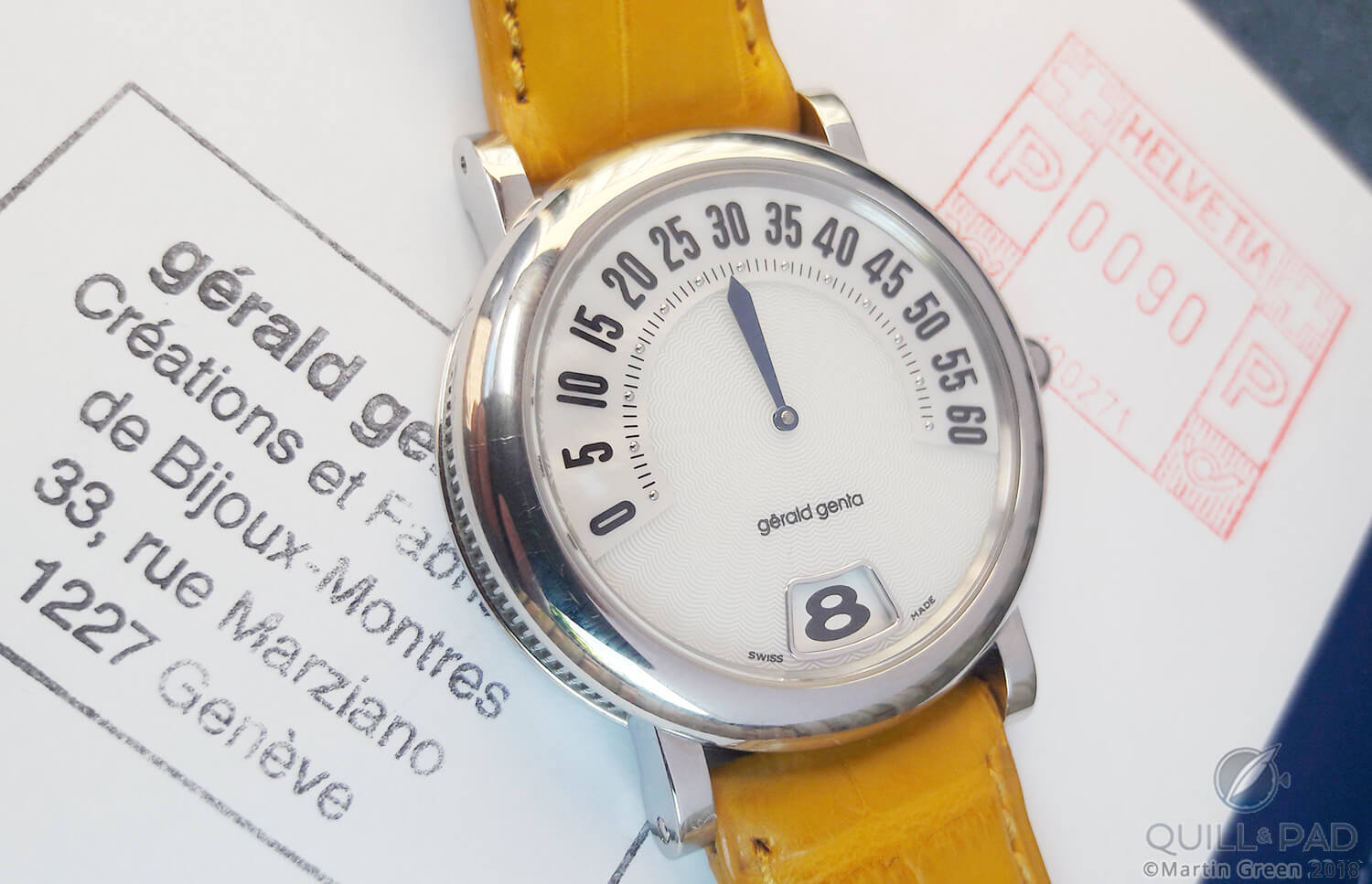
Gérald Genta Retro Classic
With this Genta watch, the term retro must be taken literally as it is short for “retrograde,” one of its main features. Genta was among the very first to embrace both retrograde hands and jump hours, now some of the most desired features by watch connoisseurs (see The Jump Hour: A Love Story and The Retrograde: One Of My Favorite Complications).
The power of Genta’s approach to both is that you have no idea if form follows function or if it is the other way around. Perfect legibility goes hand in hand with an exceptionally pure design.
The secret ingredient
From a distance, the dial looks like it has a semi-matte white center with a slightly elevated scale for the retrograde minute hand in a slightly glossier light.
The owner of this watch knows that all too well with a flick of the wrist he can change the way the light interacts with the dial, making the secret ingredient of this watch come to life!
The elevated arc for the retrograde minutes is crafted in white mother-of-pearl, as is the rest of the dial below it. What looks like a matte finish is, in fact, a very fine guilloche motif engraved in the mother-of-pearl.
These are very subtle details, yet when used in such purity also powerful details in terms of design.
Genta even kept his ego in check, something he actually did throughout the years of his eponymous watch brand, by signing the dial in the most modest of fonts and further only adding text that mattered, which in this case is “Swiss Made.”
The font for the numerals is also perfectly selected: it is bold, yet not overpowering, slightly whimsical, yet easy to read, and because of all that typical Gérald Genta.
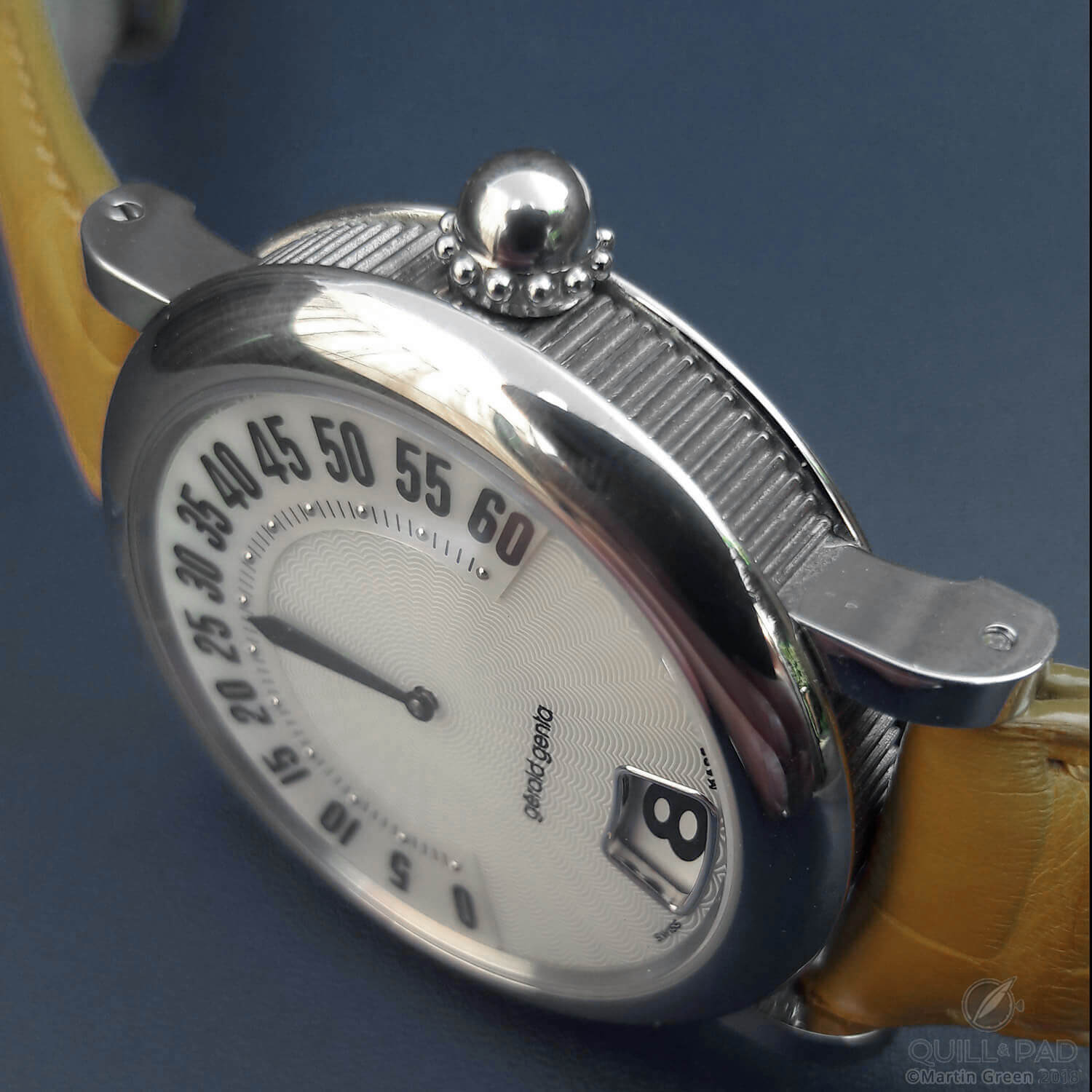
Distinctive crown and coin-edge case band of the Gérald Genta Retro Classic
The same can be said for the crown, which consists of a dome with granulated beads attached to it. This particular design became one of Genta’s hallmarks; it also adorned the different Gefica models as well as his more complicated pieces, including the Grande Sonnerie.
Again, it is unclear if form follows function or the other way around as this watch’s design makes it so perfectly easy to operate.
The minutes are indicated by a blued epee hand, while the jump hour window, slightly recessed, features a steel frame.
The watch case consists of three parts and shares the same brilliance as the dial design. Its bezel is elegantly domed and further unadorned, making room for the case band and its fluting. This fluting is just enough to lend the watch a lot of character without going overboard.
The back of the watch is slightly larger than the case band so that in combination with the bezel, it makes it look recessed –much like a Roman temple holding the pillars of the centerpiece.
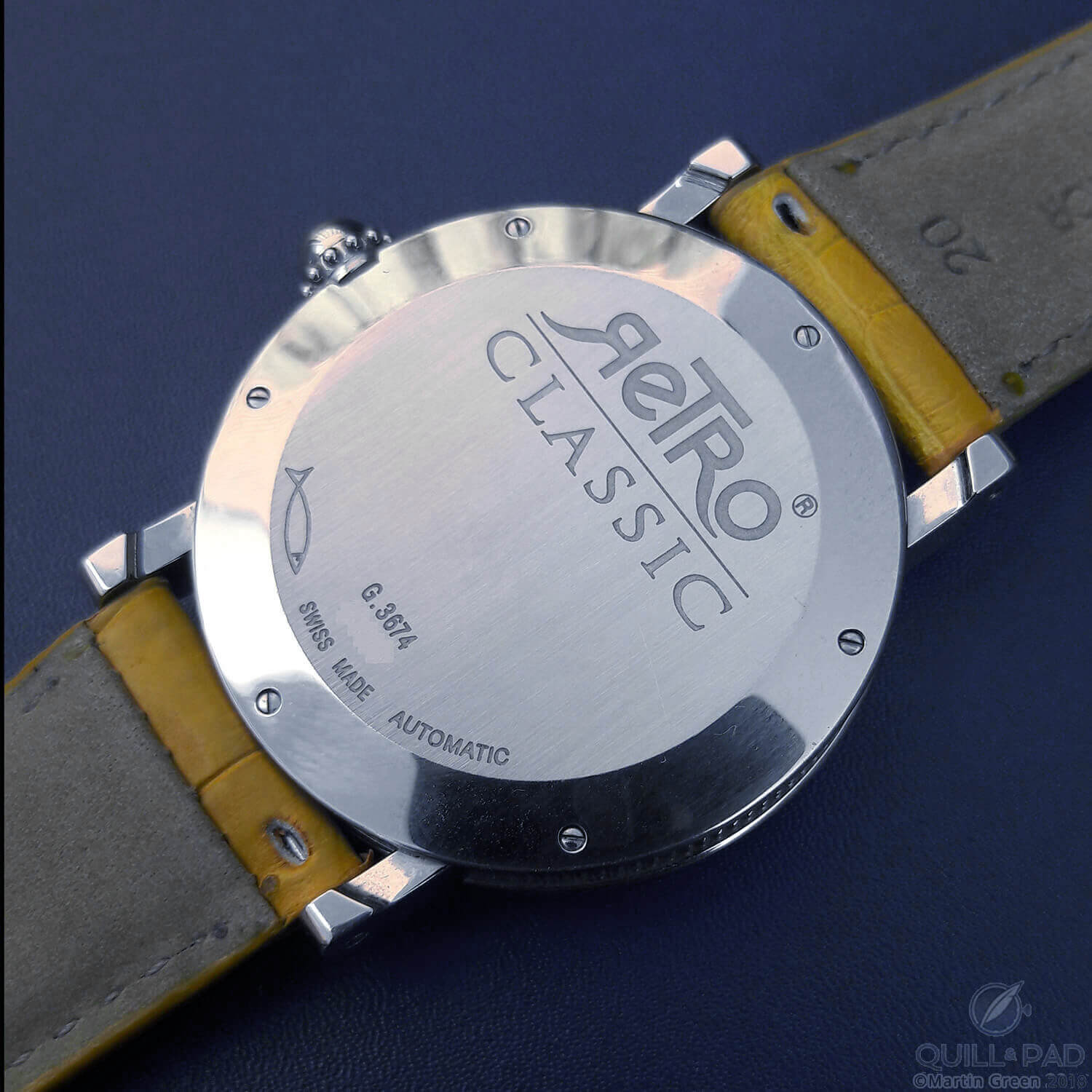
Solid case back of the Gérald Genta Retro Classic
The back is solid and relatively unadorned, only mentioning the model name and the obligatory serial numbers.
Would we want to see the movement? For sure I don’t as this wouldn’t add anything to the magic of the watch, even though it is a well-finished ETA 2892-A2 with a module for the jump hour and retrograde minutes.
The lugs are relatively short, yet curved to complement the bezel. Genta opted for a screw-in bar to secure the strap, which is not immediately apparent as the small screw heads recess completely into the side of the lug.
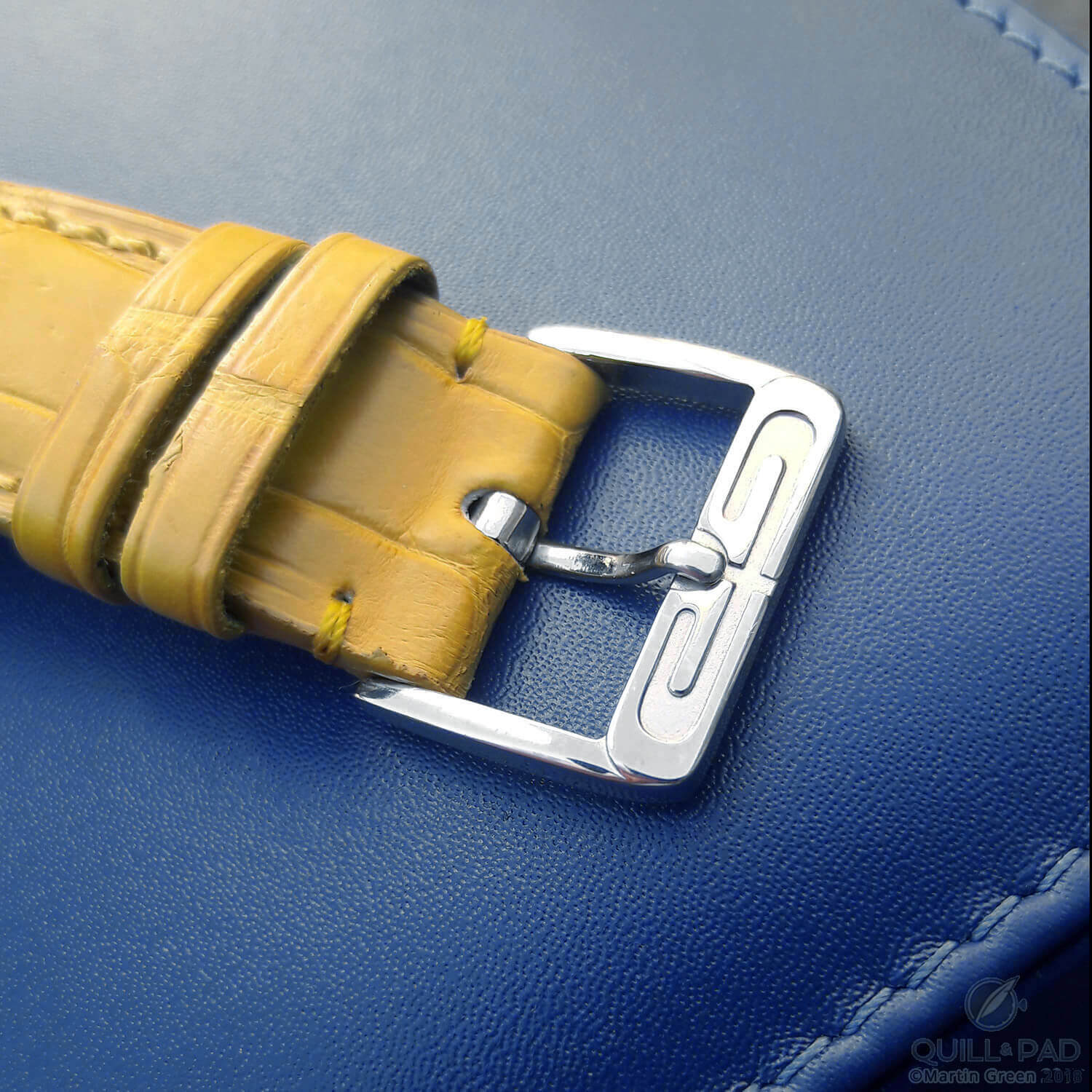
Gérald Genta Retro Classic buckle
The buckle is also simple, functional, yet beautiful, displaying Genta’s initials in an almost Art Deco style. It is the finishing touch to a watch that I consider Gérald Genta’s best design for the brand that bore his name: the Retro Classic.
Quick Facts Gérald Genta Retro Classic
Case: 38 x 10 mm, three-piece in stainless steel
Movement: automatic Gérald Genta Caliber 4503 (base ETA 2892-A2 with module for retrograde minutes and jump hour)
Functions: jump hour, retrograde minutes
Years of manufacture: 1997 to approx. 2004
Price: only available on secondary market, estimate $3,500
* This article was first published on July 11, 2018 at Gérald Genta Retro Classic: The Definitive Genta Masterpiece?
You might also enjoy:
From Zeros To Heroes: The Patek Philippe Nautilus 5711/1P And 5976/1G Anniversary Watches
Pasha De Cartier 42: Accidentally In Love
Give Me Five! Bronze Watches At Baselworld 2016
The Retrograde: One Of My Favorite Complications
Leave a Reply
Want to join the discussion?Feel free to contribute!



Very good article. I have been a Genta fan for years and have a BiRetro model. As you say, he was a genius of design using interesting materials, colours and features. I feel that perfection is not an absolute. This watch is perfect for me and gives me much pleasure every time I wear it. A “more perfect watch” would never change that.
Thank you for your kind words, Allan. Great to read that you not only have a BiRetro, but also enjoy it!
Tiene la limpieza de lineas y la armonia de un templo japonés. Concuerdo en que este es el cielo Genta. Su diseño mas basico y a la vez el mas logrado.
I have the Retro Sport and it it one of my favorite time pieces. Rarely see another one these days.
Dear Martin,
You have written so much in depth about Gerald Genta that you can feel the creations coming out alive from your pages. I am a big fan of Gerald Genta and I feel that informative article like yours keeps the memories alive alongside creating interest in these geniuses. I sincerely appreciate your wonderful article and to see many more in the future. Thanks, Martin for creating such an experience.